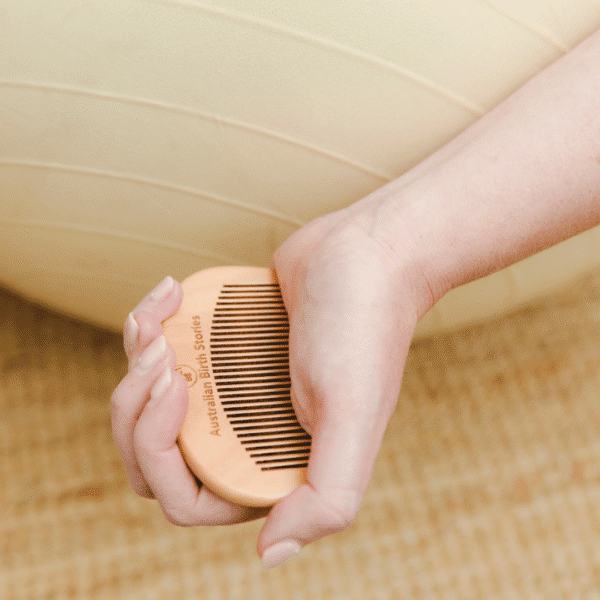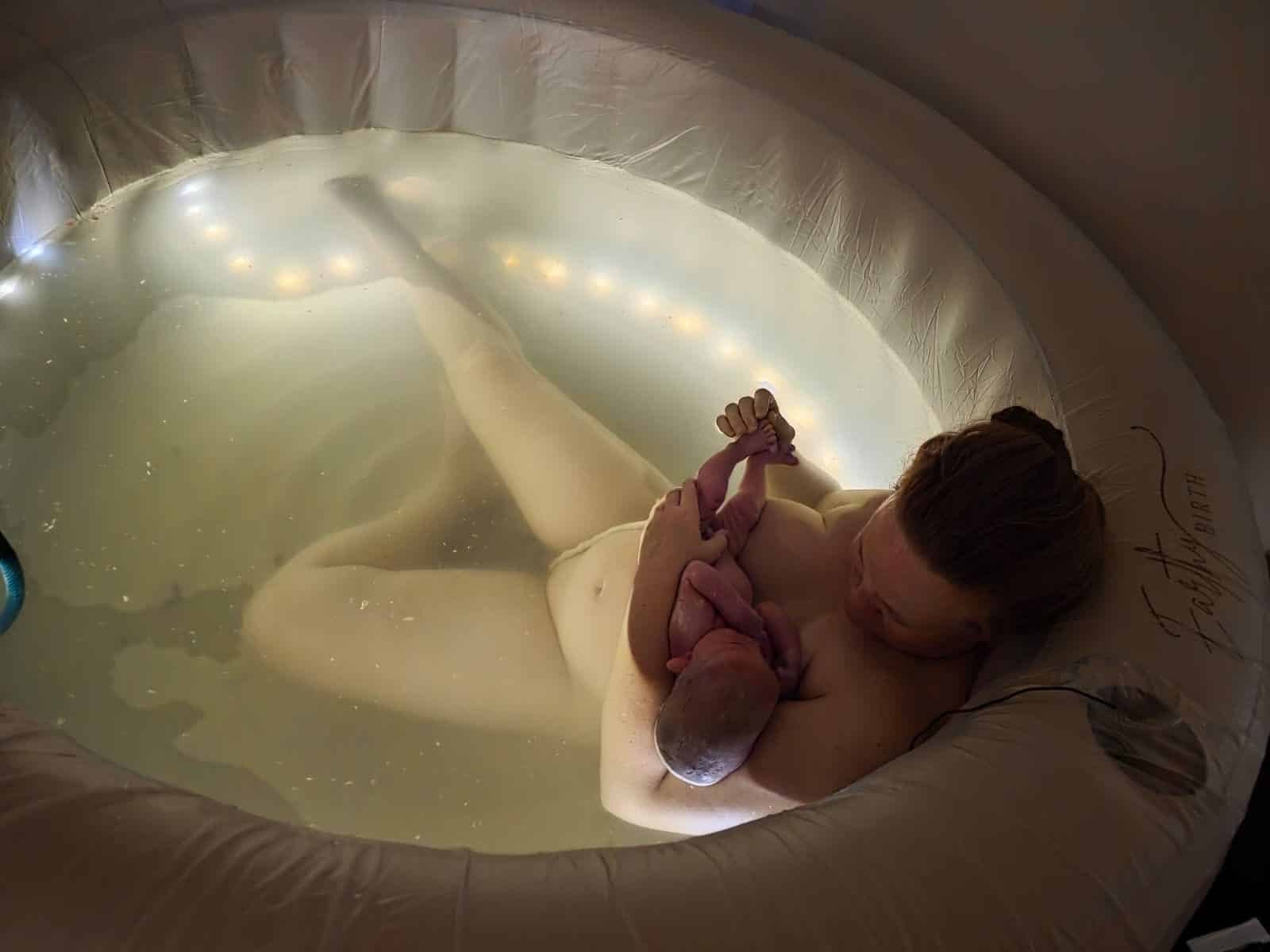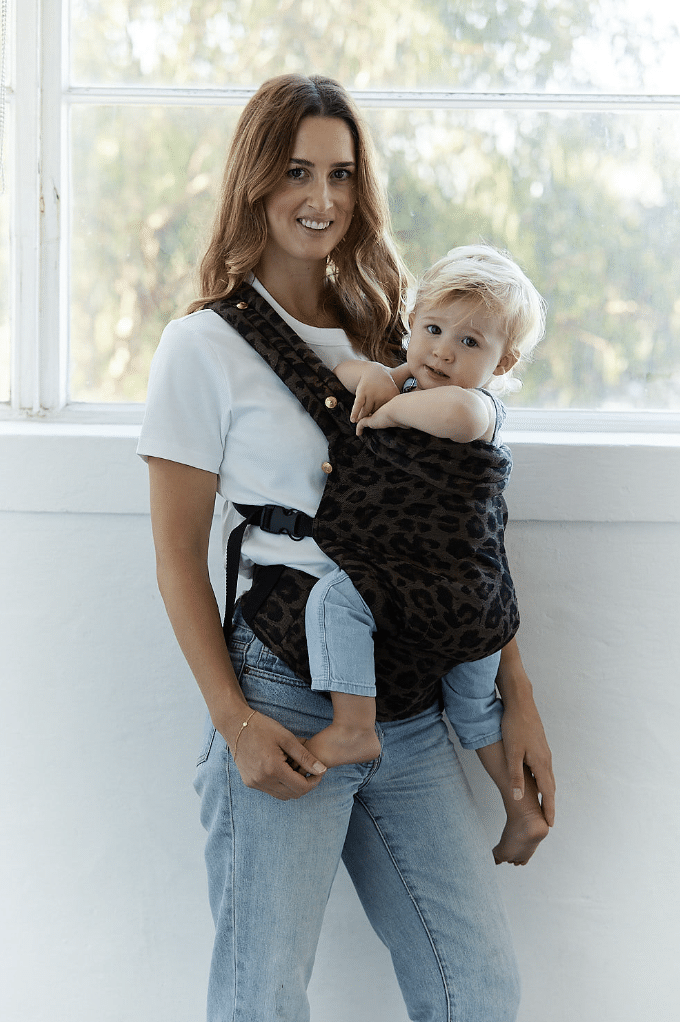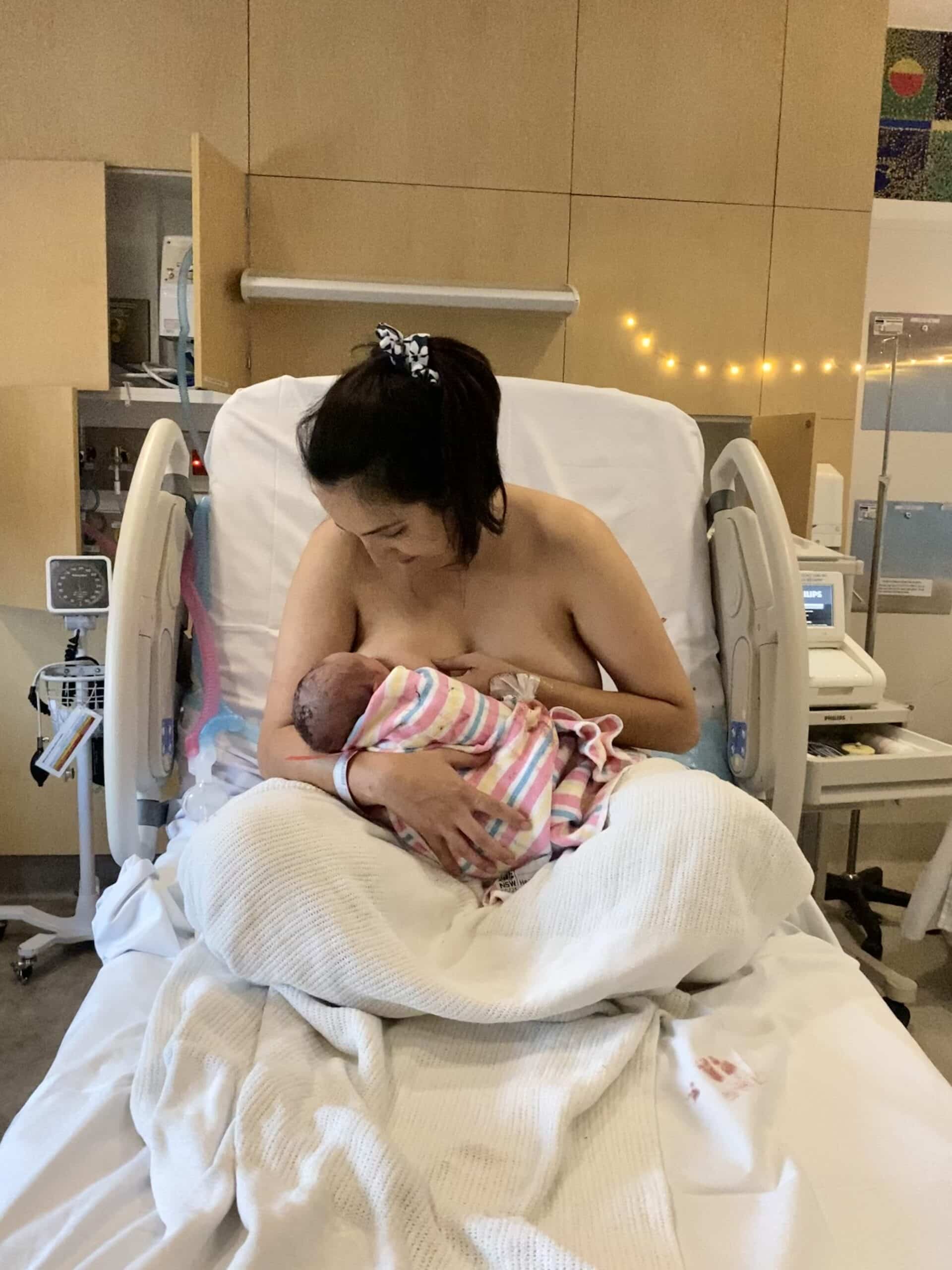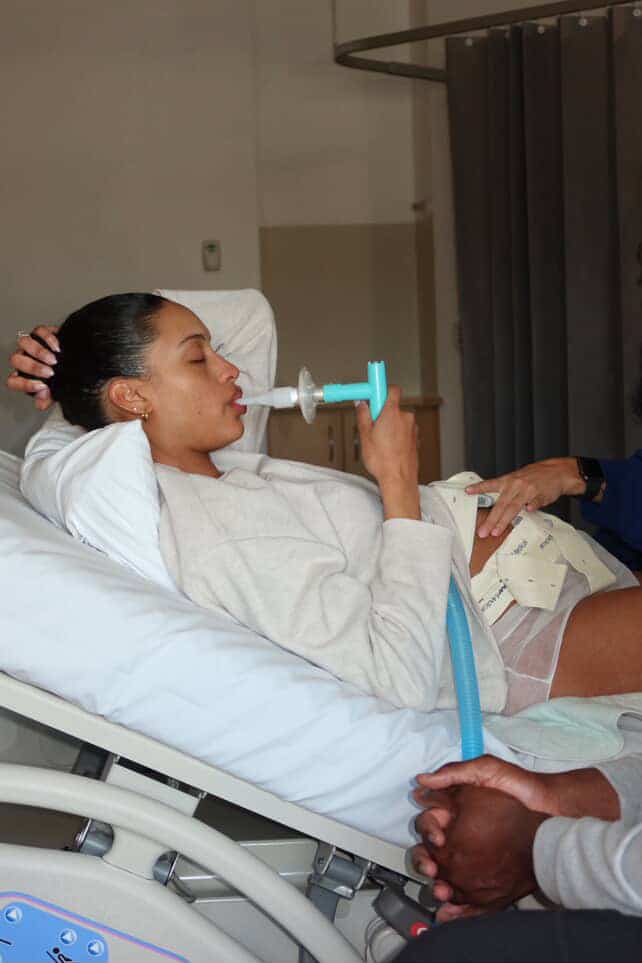Podcasts Sarah | Postpartum – hypertonic pelvic floor, Obstetric Anal Sphincter Injury (OASI)
EPISODE 440
Sarah | Postpartum – hypertonic pelvic floor, Obstetric Anal Sphincter Injury (OASI)
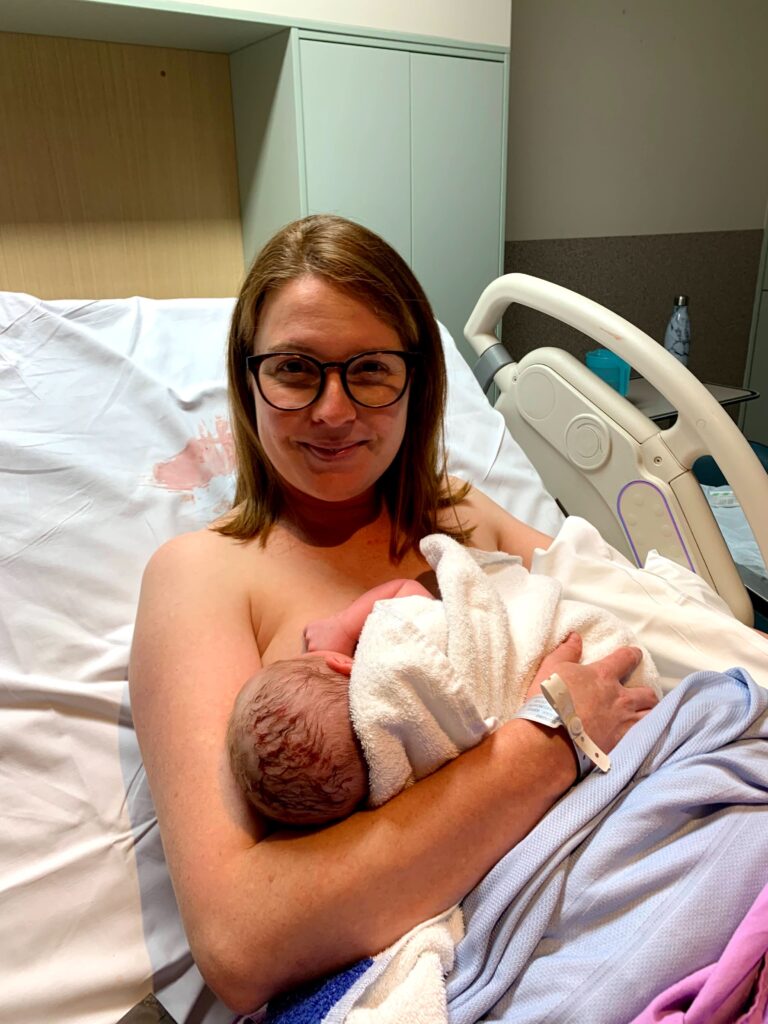
“My first birth was the smoothest of my three, a textbook vaginal birth. I laboured for four hours in hospital and I birthed in the shower, the midwife had put a mat on the floor and she just sat beside me and left me to labour as I needed to. I only had a second-degree tear so the obstetrician was called in to confirm that and she stitched me in the birthing suite. Postpartum was overwhelming as it is with a first because there’s so much not knowing but my physical recovery was great; I felt strong and I healed really well.
“I went into my second pregnancy and birth without any worries. I felt very confident that things would unfold in the same way. My labour unfolded similarly; contractions were consistent and once I got to the hospital I sat on the ball in the shower like I had in my first birth. After a while the contractions changed; I’d get a really, really intense contraction and then a huge break….minutes and minutes. I wondered if it was stalling and my midwives were young and I think because I was a second-time mum they weren’t as engaged with me.
“They checked my baby’s heart rate and I had to stand up because they couldn’t get a good reading. Once I was standing Walter dropped into my birth canal and there was a huge gush of my waters breaking. I remember trying to sit back on the ball but I couldn’t and I can see now I was in transition. I was leaning on Peter and I called for the midwives and my legs were shaking. Walter was born in one ejection and his body was born in one big movement; it was quite intense. It was two minutes between my waters breaking and his birth. I can’t describe it; I just lost control and it was like he just shot out of my body.
“The midwives helped me onto the bed, settled me and put Walter onto my chest. I could tell the midwives were concerned and when they looked at my perineum they told me they would call the obstetrician in. I was able to breastfeed Walter while I waited and I’m so grateful because many women who have a third or fourth degree tear often miss out on that feed. The obstetrician graded it as a 3A tear is categorised as less than 50% of your external anal sphincter, 3B tear is categorised as more than 50% of your external anal sphincter…you have two sphincters; internal and external. A 3C goes into the internal sphincter and a fourth-degree tear is right through.
“I think I was in such shock from the birth that I didn’t comprehend the significance of the tear. I was repaired in theatre and went back to my room. I hadn’t antenatally expressed – I didn’t know much about it then and there wasn’t a lot of talk about it – but the big feed he had initially carried him through. I was really lucky because I didn’t have any symptoms afterwards; I healed incredibly well and didn’t have incontinence so I walked out of it feeling quite lucky. It certainly was a lot more difficult; I couldn’t sit comfortably so I had to perfect a side-lying feed but within a month I could resume normal activity.
“The information I received from the hospital was very basic; it was more about caring for my stitches. The physio came to see me in hospital and gave me a pamphlet about pelvic floor exercises in postpartum and she said she’d see me at six weeks through the hospital’s physiotherapy department. I went to three appointments and they were focussed on strengthening my pelvic floor because it was very weak.
“My husband and I resumed intercourse at six months postpartum and that was when I experienced a lot of pain. I was discharged from the hospital physio so I sought a private women’s health physio and she did an internal examination and discovered that my entire pelvic bowl was stiff. It’s called a hypertonic pelvic floor which is where the muscles have experienced trauma and can’t relax; they’re switched on all the time. She helped me with releasing and relaxing those internal muscles by doing regular massage. It’s only months after early postpartum – sometimes as long as 12 months postpartum – when you start having intercourse again that secondary symptoms can emerge and I think that’s when lots of women seek guidance from a women’s health physiotherapist. It’s hard to separate the physiology from the emotional. I thought I was healed because my scar tissue had healed and looked great and yet internally my muscles were still suffering from trauma. It’s hard because you think you’re doing really well and then an issue arises and you feel like you’ve taken ten steps forward and then ten steps back again. There were points where I was ready to give up and I really wondered if we’d be able to have sex again or conceive another child because I was in so much pain. The internal massage really taught me how to relax those muscles.
“As soon as I was pregnant again I started to get quite concerned about another birth. I was asymptomatic at that point so a vaginal birth felt like a really achievable option but it was still a risk I was taking. An MGP program had been established in my region so I got into that and my midwife thought I was a good candidate for another vaginal birth and the obstetrician supported that as well. I think I didn’t understand the statistics; the OASI recurrence rate is 10 percent yet I wasn’t aware of all the procedures that are available to internally check your scar tissue and sphincter strength at that point.
“My third labour was good; I had consistent contractions and no complications. I never measured big on fundal height and my previous babies were average size so it wasn’t a concern. I went to 40+5 and that morning I had an appointment to make a plan for an induction but I had niggles and I felt like labour was starting. By 8am I called my midwife and she encouraged me to go to hospital. I got out of the car and the contarctions were really intense so I knew I had to get to my midwife and into a position that wasn’t standing. She planned to use a perineal compress and tried to slow down the pushing stage.
“I was breathing through the contractions once we got to birthing suite and I was 9 cm. I wasn’t in transition or feeling the need to push, it was just really intense. My midwife arrived and at that stage I was rocking on the bed. She offered to break my waters and I consented and it was such a relief. Within five minutes I had the urge to push and I started transition and my fear of tearing really kicked in. I lay on my side but it didn’t feel right so I got on all fours and I was screaming out and my midwife had the warm compress on. She encouraged me to let my body do the pushing and I felt the ring of fire and his head was born. With the next contraction his body was born and I turned over and pulled Lewis through my legs and lay down. I was concerned and wanted to know how my perineum was and I remember them looking and they were concerned I was having a postpartum hemorrhage so they gave me the syntocinon injection and the contractions were really painful. I got really emotional but the bleeding stopped and they were able to inspect the perineum. My midwife looked at me and apologised and told me I had torn again. I felt so deflated…it was beautiful to meet my baby but I was so disappointed. It was the realisation that I knew what was ahead and I didn’t know how it would impact me long-term. I understood the gravity of it the second time. The mental side of it was really difficult. Third and fourth degree tears carry so much shame and blame for women and I felt that in the first few days and weeks.
“I went to theatre again – it was another 3A tear – and being separated from Lewis was so difficult. I felt like it was a more painful recovery and I had hardly any core strength. I felt like I didn’t have independence and really needed the midwives to help me with Lewis in the hospital. I felt so vulnerable, like I wasn’t myself and wasn’t capable of looking after my baby in those first couple of days.
“I didn’t have any incontinence but I did have urgency; whenever I felt the urge to do a wee or a poo I had to go straight to the toilet. It’s so hard to take care of yourself with other children too and it was a busy time of year and I wanted to be there for the kids but at the same time I knew that what I should be doing was lying down at home.
“I linked in with physiotherapy again but because I didn’t have incontinence they just encouraged me to do my pelvic floor exercises. I felt like I was so overwhelmed with motherhood though that I didn’t feel like I even had the capacity to do my exercises.
“It feels like the follow-up care is really lacking for women who have suffered an OASI. I think we need realistic timelines because we’re told it will take six weeks to heal when in reality it’s much longer than that. Sometimes recovery can take up to two years for full tissue and muscle healing but this isn’t information that’s shared readily. It’s hard to hear that your recovery is going to be that long but for me, now two years postpartum, I finally feel better in my strength and bowel and bladder movements. It’s so easy to compare yourself to the women who are back at exercise classes which amplifies your fear and anxiety but you need to remember that you’ve suffered a serious injury and it does take time to heal.
Resources:
You can access 5 medicare rebates for a women’s health physiotherapist via a GP health care plan.
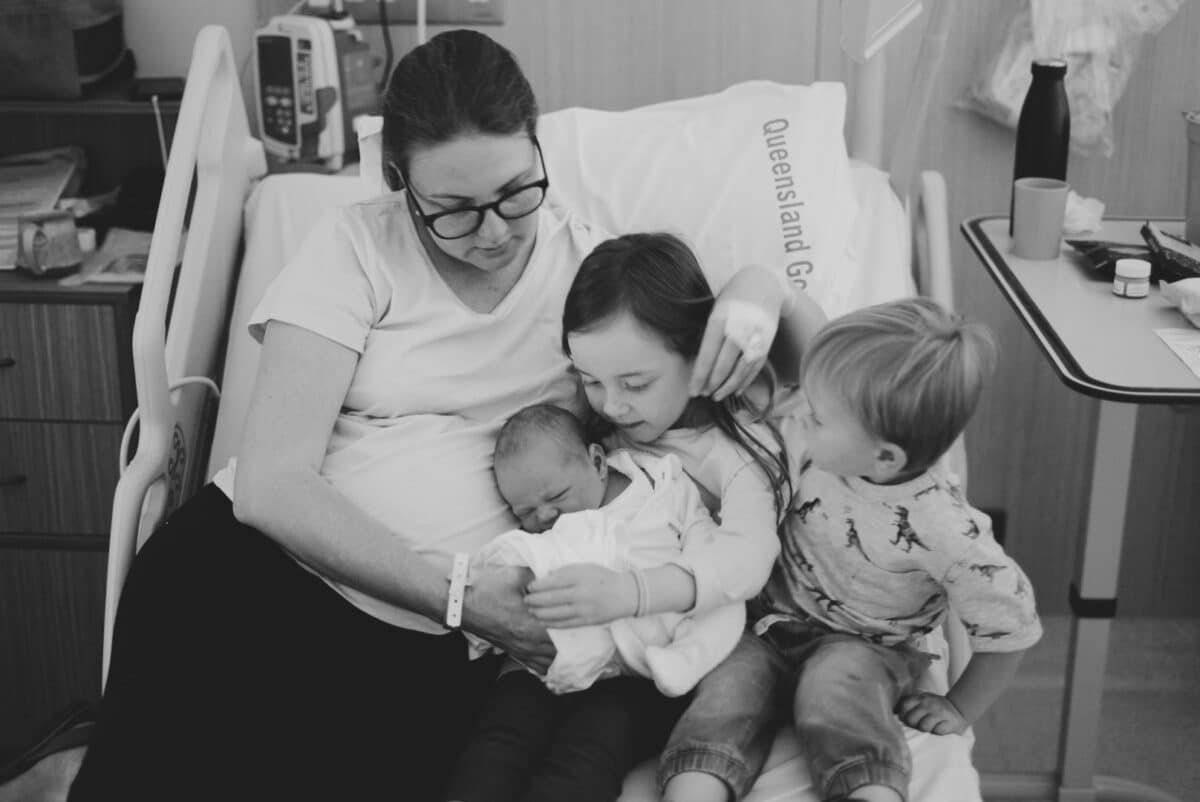

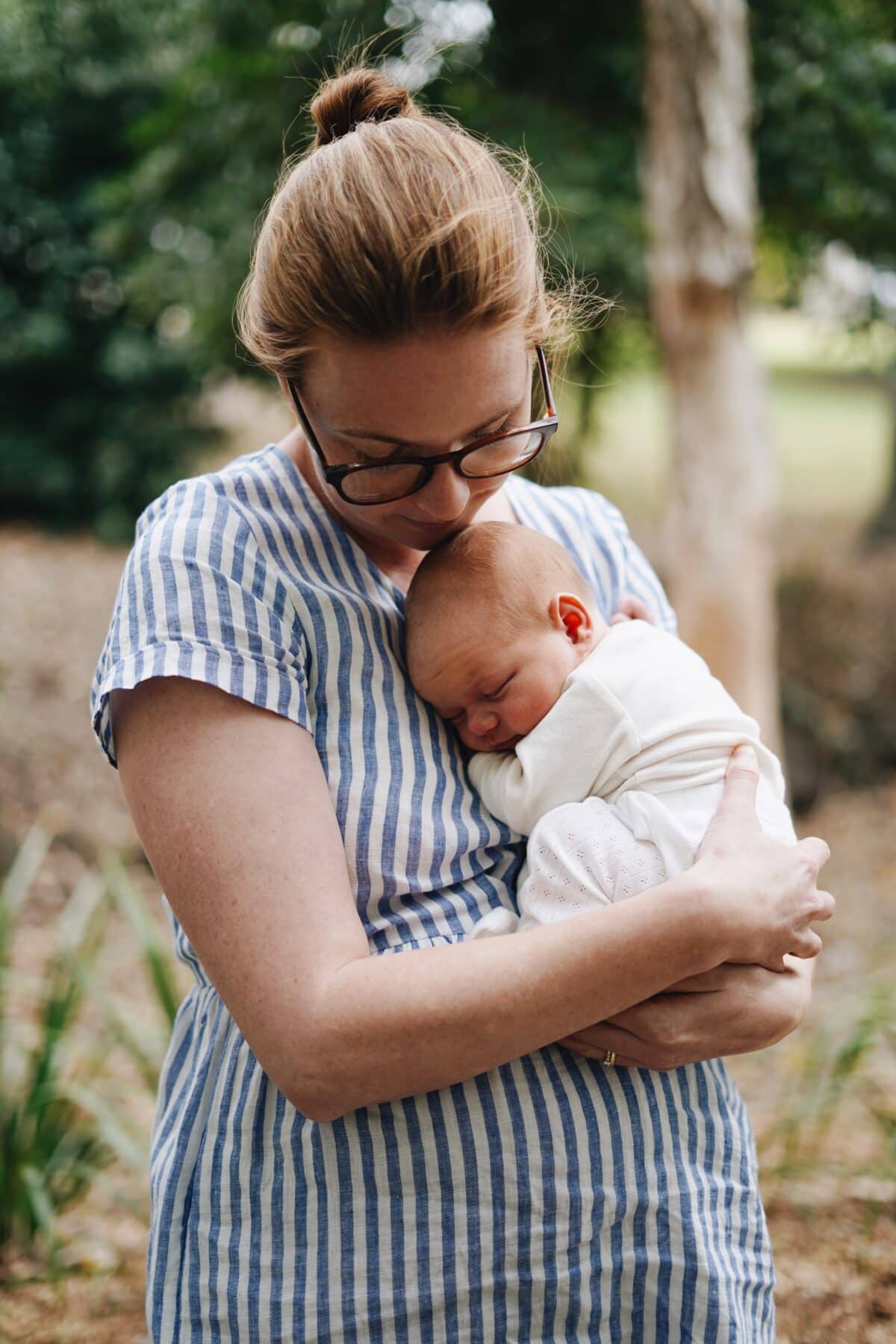
Topics Discussed
Hypertonic pelvic floor, internal massage, OASI, Third-degree tear, Three babies, Vaginal birth, Women’s health physiotherapist
Episode Sponsor
Today episode is brought to you by our library of free resources.
Download our free pregnancy and labour tips guides on Mastitis, Perineal Massage, Postpartum Fatigue and many more to assist you in the journey towards birth.
Categories
Related Products
-
Birth Combs: Harness Your Body’s Natural Pain Relief
$24.95Crafted from smooth, natural wood, our birth combs activate specific pressure points in your hands that trigger your body’s innate pain-relieving responses.
Join the conversation
Sign up to get the latest updates, freebies, podcast releases straight into your inbox
@AustralianBirthStories
Follow along with us
@AustralianBirthStories
Follow along with us
@AustralianBirthStories
Follow along with us
@AustralianBirthStories
Follow along with us
@AustralianBirthStories
Follow along with us
@AustralianBirthStories
Follow along with us
@AustralianBirthStories
Follow along with us
@AustralianBirthStories
Follow along with us
@AustralianBirthStories
Follow along with us
@AustralianBirthStories
Follow along with us
@AustralianBirthStories
Follow along with us
@AustralianBirthStories
Follow along with us
